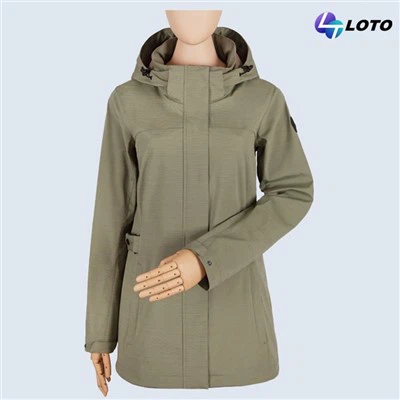The world of outerwear, encompassing everything from rain jackets to winter coats, represents a microcosm of global economic trends, production strategies, and consumer demands. Beyond the zippers, fabrics, and stitches, lies a complex web of economics that shapes the manufacturing landscape of this crucial industry segment.
Historical Perspective
Historically, outerwear's primary function was protection against the elements. Materials and designs were locally sourced and created, leading to regional variations. With globalization, outerwear became a symbol of fashion, and manufacturing expanded its horizons, leading to a shift in production epicenters to areas with cost-effective labor and materials.

Key Economic Drivers in Outerwear Manufacturing
Labor Costs: Manufacturing hubs in countries like Bangladesh, Vietnam, and China became popular due to their low labor costs. However, wage inflation and increased scrutiny on labor rights have started to shift the balance, prompting brands to explore other regions or invest in automation.
Raw Materials: The cost of raw materials, such as cotton, synthetic fibers, and specialized fabrics like Gore-Tex, significantly influences manufacturing decisions. Fluctuations in commodity prices can directly impact the price points of finished products.
Technological Advancements: Automation and innovations in fabric technology often require significant capital investment but can lead to long-term savings and consistent product quality.
Supply Chain Dynamics: Efficient supply chain management, from sourcing raw materials to delivering the final product to retailers or direct to consumers, plays a crucial role in determining profitability. The rise of just-in-time manufacturing and localized production hubs has been strategies to mitigate risks and reduce costs.
Environmental and Sustainability Concerns: With increasing consumer demand for sustainable products, brands are investing in eco-friendly materials and production processes. While initially more expensive, they cater to a growing market segment willing to pay a premium for sustainable goods.
Tariffs and Trade Policies: Geopolitical factors, such as trade wars or changes in import/export duties, can significantly affect manufacturing decisions. Brands often need to navigate these complexities by diversifying their manufacturing bases or renegotiating supplier contracts.

Challenges and Opportunities
Fast Fashion vs. Durability: The fast fashion trend demands quick turnaround times and low-cost production. However, there's a counter-movement emphasizing durable and timeless outerwear pieces, which often come with higher manufacturing costs but promise longer product lifespans.
Diversifying Production: With rising costs in traditional manufacturing hubs, brands are exploring countries in Africa, South America, and Southeast Asia to diversify production and mitigate risks.
Direct-to-Consumer (DTC) Models: Many brands are bypassing traditional retail channels to sell directly to consumers. While this reduces the middleman costs, it demands investment in e-commerce infrastructure, logistics, and brand marketing.
The Future Landscape
The economics of outerwear manufacturing are rapidly evolving. Ethical production, sustainable practices, and technological innovations will play pivotal roles. Brands that can adapt to these shifting sands—balancing costs, ethical responsibilities, and consumer demands—will thrive in the changing landscape.
Conclusion
The outerwear manufacturing industry, with its intricate economic fabric, offers a lens into the broader dynamics of global production, trade, and consumer behavior. As brands navigate this complex terrain, the industry's future promises to be as multifaceted and vibrant as the garments it produces.







